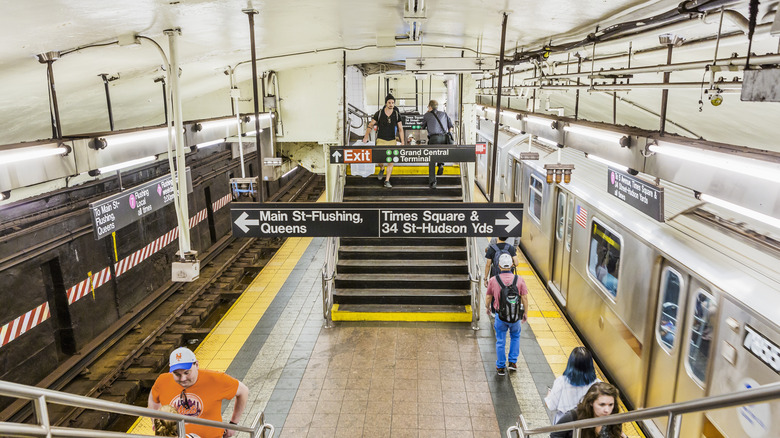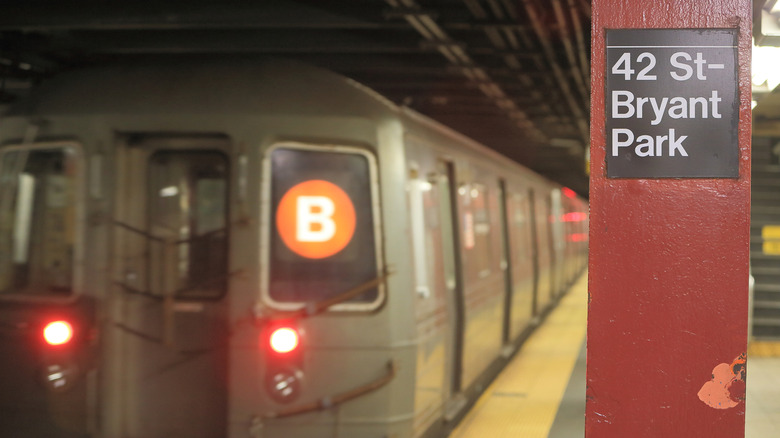New York City's Most Unreliable Subway Line Is One Tourists Should Avoid If They Want An On-Time Arrival
New York City's subway system is both overwhelming and alluring. For tourists dropping by the region, it's also somewhat of a quintessential experience, if not the highlight of their NYC itinerary. The convenience, the budget-friendly appeal to explore New York, and its well-connectedness to major highlights are other draws. Since its inception in 1904, the subway system has grown to encompass 665 miles of track, 472 stations, and all five boroughs. Naturally, you will find a line that will get you from Point A to Point B, but whether that's a smooth, reliable ride will depend on the train you're taking.
According to data released by the Metropolitan Transit Authority (MTA), which runs the megacity's subway line, there's one train line with more delays than all the others, and that's the B train. In 2024, the B Train has averaged an on-time performance of 65.1% — compared to the system-wide 82.1%, it's the least reliable line to take. Another subway train to take note of is the D Train, a subway line New Yorkers agree should be avoided at all costs. It fares only slightly better than the B in terms of tardiness and holds a questionable range of the Big Apple's characters. Contrastingly, the most timely of the bunch are all three S shuttle trains and the L, 7, G, and M lines.
What to know about B Train delays
The B Line runs between the Bronx and Brighton Beach in Brooklyn on weekdays throughout the day, except late nights. Due to a significantly longer route, the B division shares the tracks more frequently with other trains, which can lead to delays. One rider on Reddit comments that the B is held often, so the rest of the lines can make up for any lost time. Other major reasons for its low on-time percentage are a lack of workers and general operational issues. So, how much fun vacation time do you lose when you hop on this line?
A metro rider on r/nycrail reveals that the B Train's wait is anywhere between 15 and 17 minutes, saying, "There's never any active alerts indicating an issue." A delay is counted when a train arrives at the last stop five minutes later than its scheduled time, so you can expect to wait for at least five minutes when the B Line is delayed. If possible, avoid the peak rush hours (from 7 a.m. to 10 a.m. and 5 p.m. to 8 p.m.) when timeliness is further compromised due to overcrowding and the fact that the B train interlines much more than others.
Despite these problems, the subway remains the best way to blend in like a local in NYC. Moreover, the MTA is working to modernize the signal system to improve reliability. But like the B Train on its worst days, change comes slowly on the subways. And if you're exploring the destination on a time crunch, it's better to avoid the B Line for a few more years.

